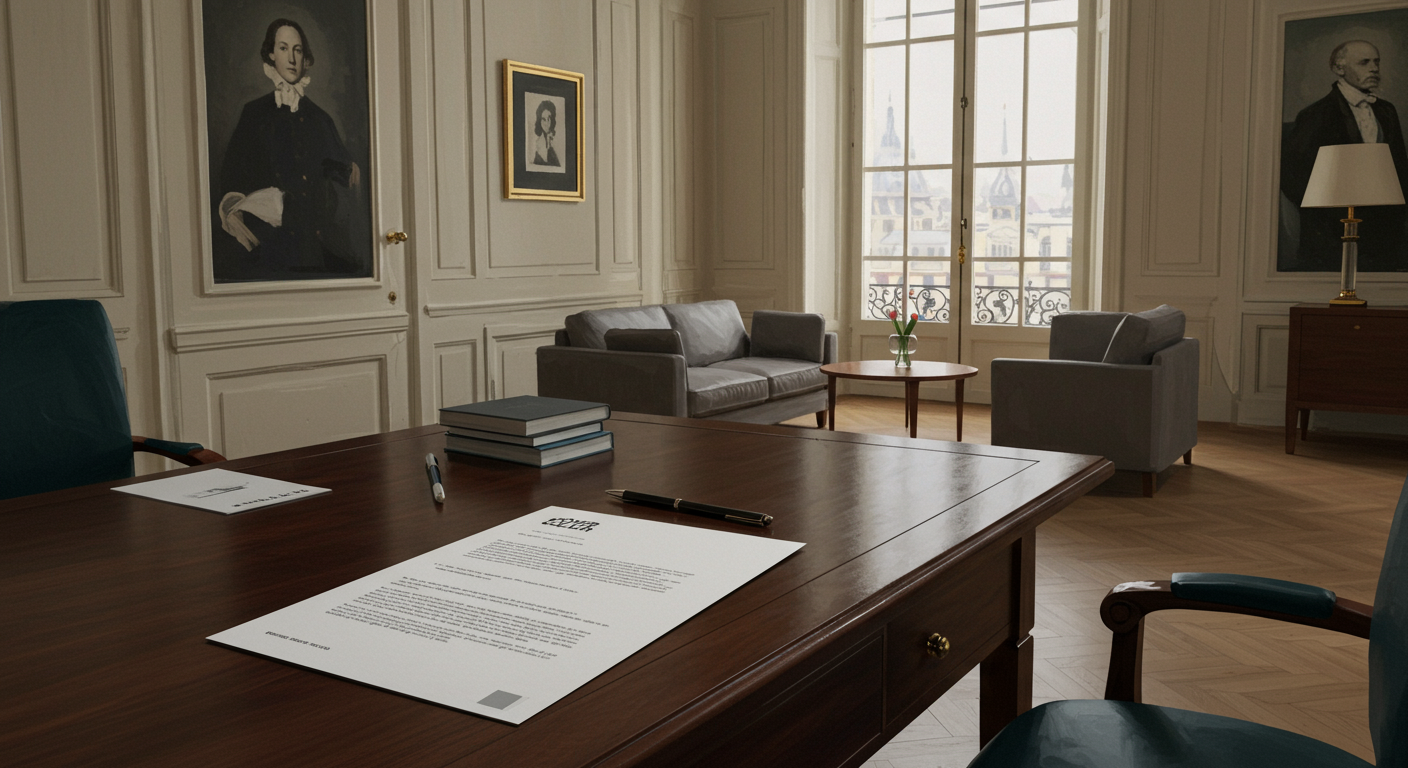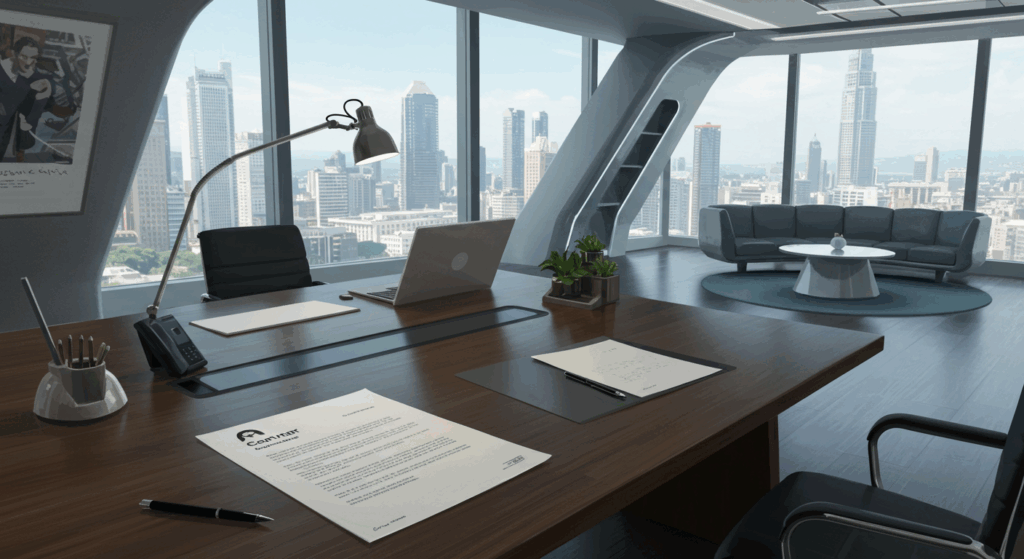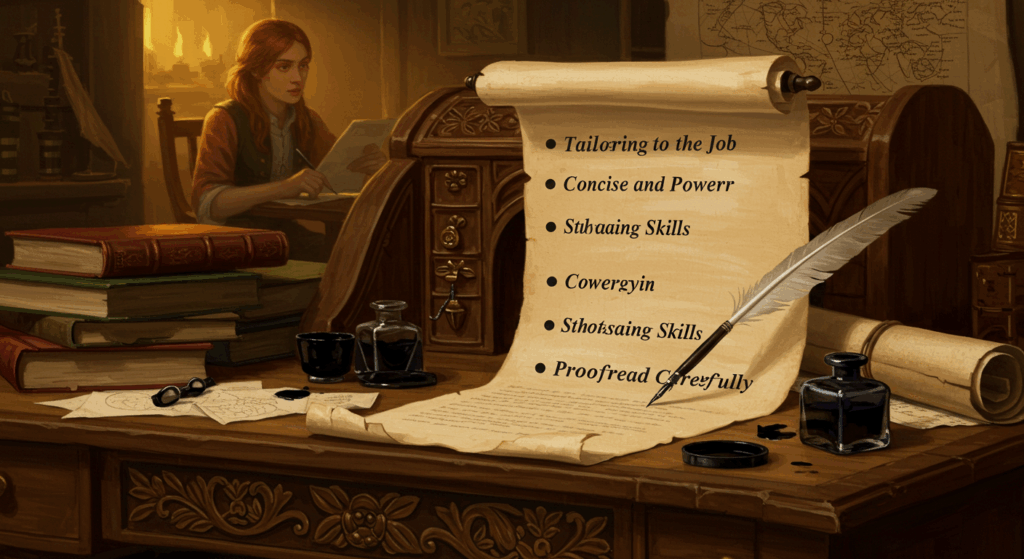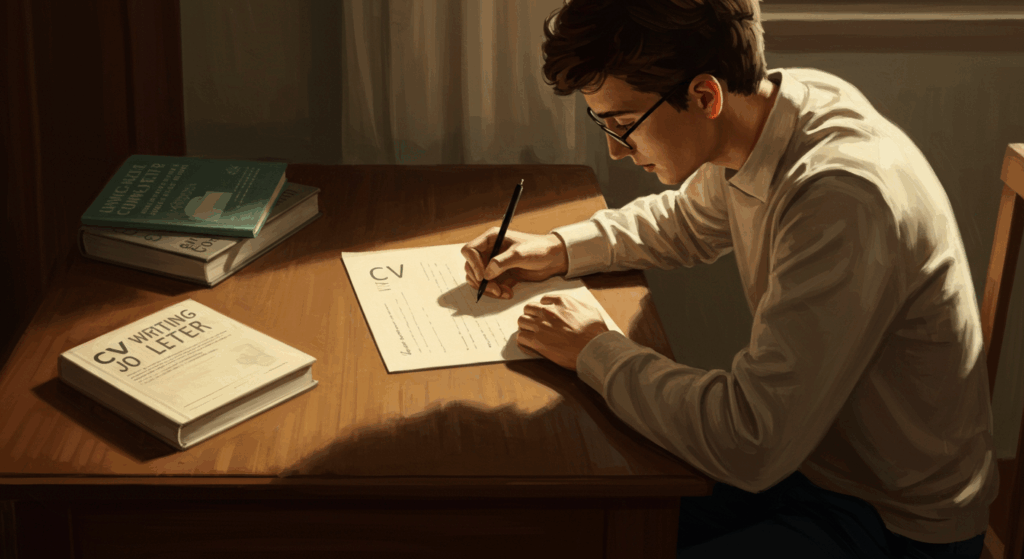The Only Cover Letter Guide You’ll Actually Want to Read (Promise)
Writing a cover letter can feel like trying to flirt on a dating app—too short and you seem uninterested, too long and you’re oversharing about your cat’s gluten-free diet. But if you do it right? A cover letter becomes this tiny little spotlight that makes a recruiter think, “Ohhh, we need to talk to this person.” That’s the energy we’re going for.
In this friendly, no-stress cover letter guide, I’ll walk you through what to write (and what to skip), share practical cover letter tips that work for Gen Z and Millennials (hello, we’re all juggling 1,000 tabs and a Spotify queue), and give you clean cover letter examples you can copy and tweak. This is a guide to writing that actually feels human—no corporate robot voice, no cringey buzzwords (ok maybe like one), and no guilt if your first draft is messy. We’re here to make something that sounds like you, only sharper.
Grab coffee or tea or a suspiciously large boba. Let’s build your best cover letter from the ground up.
Why Cover Letters Still Matter (Even When Job Descriptions Say “Optional”)
I know—some postings say a cover letter is optional. But so is flossing, and your dentist still gives you The Look. A good cover letter:
- Shows your voice (the real you, not a resume in paragraph form).
- Bridges gaps (career switch, employment break, moving cities, etc.).
- Targets the exact role (so recruiters don’t have to guess why you applied).
- Proves you can write (still a huge plus in any role, ngl).
Think of it as your 30-second Netflix trailer. Your resume is the full film; your cover letter is the compelling teaser that gets someone to hit “Play.”
What Recruiters Actually Want to See
You don’t need a dramatic “aha!” origin story unless you truly have one. What recruiters want is simple:
- Clarity: Why this company, why this role, why you—said simply.
- Relevance: Teeny tiny stories that show skills the job needs.
- Confidence (not arrogance): “Here’s how I can help,” not “Here’s why I am the chosen one.”
- Brevity: One page. Four to six short paragraphs or three tight sections. Done.
If your cover letter answers those notes, you’re already ahead.
A Simple Structure That Never Fails
Here’s a flexible structure you can use for almost any job. It’s not a script; it’s scaffolding. Once you get the hang of it, you’ll riff like a pro.
1) Hook + Role + Why Them
A quick opening that names the role and shows you actually know the company (no copy-paste vibes).
2) Why You (Proof)
Pick 2–3 short proof points tied to the job description. Micro-stories > generic claims.
3) Values/Match + Call-to-Action
Connect your values to theirs, mention impact you want to bring, and invite the next step.
That’s it. Three moves. Easy.
The Golden Rules (aka Core Cover Letter Tips)
Let’s drop the most useful cover letter tips right now so you can keep them in your tab-cluttered brain:
- Use the job description like a checklist. Mirror the language—if they want “lifecycle email campaigns,” use that phrase where it fits your experience.
- Lead with outcomes. Numbers are your besties: time saved, revenue generated, response rates improved, customer satisfaction bumps, cost reductions, etc.
- Keep it skimmable. One page, short paragraphs, bold a keyword or two if the company culture seems okay with it.
- Sound like a person. “I’m excited” is fine. “I’m thrilled to leverage my synergies”—please don’t.
- Make it specific to the company. One sentence that proves you did real research can elevate the entire letter.
- Close with a proactive note. “I’d love to share more on how I can help X team hit Y goal.” Sinmple, confident, not pushy.
If you use this guide to writing your next letter, you’ll already feel 10x calmer.
What to Avoid (You’ll Thank Yourself Later)
- Repeating your entire resume. Assume they’re looking at it side-by-side.
- Buzzword salad. “Results-driven, detail-oriented, team player” = wallpaper text unless paired with proof.
- Novel-length backstory. If it doesn’t connect to the role, save it for the interview icebreaker.
- Passive tone. “I was responsible for” → “I led,” “I shipped,” “I launched,” “I increased.”
- Typos. Run spellcheck. Then read it aloud. Then make your friend who judges fonts read it too.
Formatting That Feels Clean (and ATS-Friendly)
Don’t overthink design. Keep it clean and readable on both desktop and mobile:
- Font: A system font (Arial, Calibri, Georgia) at 11–12pt.
- Margins: 1 inch is standard; 0.75 inch if you need space.
- Length: Half a page to one page. If you’re early career, aim shorter.
- File name:
FirstName-LastName-Cover-Letter-Company-Role.pdfso it’s easy to find. - Header: Match your resume header so it looks like a cohesive set.
Yes, PDFs are still the safest bet—unless the application demands a text box, in which case paste clean, unformatted text and keep line breaks tight.
A Polite, Modern Greeting
If you can’t find a name, go with: “Hello [Team/Department] Hiring Team,”
It’s warmer than “To Whom It May Concern” (ancient relic energy) and more respectful than “Hey guys” (please no). If you do find a name, triple-check the spelling and pronouns.
A Flexible Template You Can Personalize
Use this as a base. Swap in your details and tweak the tone to match the company.
Hello [Team/Department] Hiring Team,
I’m excited to apply for the [Job Title] role at [Company]. I’ve been following your work on [specific product, initiative, or mission], and I love how you’ve [what you admire]. I’d be excited to help [team/area] push that even further.
In my previous role at [Most Relevant Company], I [what you did], which led to [quantified outcome—% increase, cost saved, time reduced]. I also [second relevant proof point], collaborating closely with [teams/partners] to [impact]. These experiences made me strong at [skill 1], [skill 2], and [skill 3 tied to the job description].
What draws me most to [Company] is [value or strategy match]. I care a lot about [something authentic], and I see a clear path to contribute by [how you’ll help them hit a goal]. I’d love to chat about how I can support [team] on [specific upcoming challenge or initiative].
Thanks for your time—I’m looking forward to the possibility of speaking soon.
Best,
[Your Name]
[Portfolio/LinkedIn] · [City or Time Zone]
See? Human. Focused. Kind of… pleasant?
Cover Letter Examples (By Role & Situation)
This section is your buffet of cover letter examples—snack on the parts that fit you and leave the rest. Feel free to remix.
Example: Early-Career Marketing Coordinator
Hello Growth Team,
I’m applying for the Marketing Coordinator role at CloudBerry. Your TikTok-to-newsletter funnel (genius) and the recent shift to community-led growth are right up my alley.
At Campus Creative Lab, I led a three-week campaign that grew our email list by 38% and bumped event attendance by 26%, using a simple loop: short Reels → UGC contests → lead magnet landing page. I also built a weekly reporting dashboard in Sheets so the team could see which creators were actually moving sign-ups (not just views).
I’m excited about CloudBerry’s experiments with micro-communities and partnerships. I’d love to help you test new hooks for your short-form content and improve the handoff into lifecycle emails. Thanks for reading—would love to chat.
Best,
Kaila Minh
Example: Career Switch to UX Design
Hello Product Design Team,
I’m excited to apply for the Associate UX Designer role at Northlight. Your focus on accessibility and calm product experiences really resonates with me.
I’m transitioning from customer support, where I spent three years at SwiftTrack talking to users every day. I mapped top pain points across 4,000+ tickets and partnered with design to simplify onboarding, which cut drop-off by 19%. In my UX bootcamp capstone, I redesigned a multi-step form using progressive disclosure and accessible labels, leading to a 22% completion lift in user tests.
I’d love to bring that user-obsessed mindset to Northlight and keep shaping flows that reduce cognitive load. Thanks for considering my application.
Warmly,
Andre R.
Example: Software Engineer, Mid-Level
Hello Platform Engineering Team,
I’m applying for the Software Engineer (Backend) role at Driftline. I’ve been following your move from a monolith to services and the way you’ve documented your RFC process—chef’s kiss.
At LoopCart, I led the migration of our order events pipeline to Kafka and cut average processing time by 41% while improving failure visibility with OpenTelemetry. I’ve also shipped features in Go and Node across auth, payments, and reporting, and I enjoy the whole PR review ritual (I leave thoughtful comments, promise).
I’m excited about building reliable systems that quietly do the work. Would love to discuss how I can help with your billing domain and SLOs.
Best,
Maya Singh
Example: Operations/Project Manager
Hello Operations Hiring Team,
I’m applying for the Operations Manager role at Hearth & Co. Your blend of craft manufacturing and modern logistics is so fun (and a little chaotic, my favorite).
In my last role at Wilde, I implemented a vendor scorecard and weekly stand-ups that reduced late POs by 31% and saved about $180k annually in expedited shipping. I’m meticulous with process docs (Notion nerd here) and care a lot about building calm routines for teams—no heroics, just fewer fires.
I’d love to help Hearth & Co. scale production while keeping quality high and lead times predictable.
Thanks,
Tara
These cover letter examples show a pattern: short, specific, relevant. No fluff, just proof.
Mini “Guide to Writing” Your First Draft (10-Minute Sprint)
If you’re stuck, use this 10-minute sprint. Seriously—set a timer.
- 90 seconds: Jot why you like the company in one sentence. Add one product or value you actually care about.
- 3 minutes: Write three bullets that prove you can do this job—each with a tiny result number.
- 2 minutes: Translate those bullets into two short paragraphs (each 2–3 sentences). Use active verbs.
- 90 seconds: Draft a closing that connects your values to theirs, and ask for a chat.
- 90 seconds: Read it out loud. Trim anything that sounds like a LinkedIn motivational poster.
Boom. You have a draft. It’s not perfect, but the bones are there. (Perfect is the enemy of submitted.)
How to Customize Fast Without Going Insane
You do not need to write a brand-new letter from scratch for every single job. Make a strong base version, then tweak:
- Sentence 1: Change the company and one specific detail that proves you looked them up.
- Proof point: Replace one bullet with something that maps exactly to their top requirement.
- CTA: Mention one goal or initiative of theirs you want to support.
That’s it. Three tiny edits. Total time: ~10 minutes. Your future self says thank you.
Power Verbs & Phrases That Don’t Feel Cringe
- Led, launched, shipped, designed, implemented, optimized, refactored, reduced, increased, streamlined, analyzed, validated, facilitated, coordinated, orchestrated (fancy), automated, piloted, scaled.
- “I’d love to help your team [do thing] by [skill].”
- “In past roles, I [action], which led to [result].”
- “I’ve been following your [initiative], and I’m excited by the chance to contribute.”
Keep it simple. Strong beats shiny.
Quantify Without Access to Secret Company Numbers
Sometimes you don’t have hard stats. You can still quantify impact:
- Time: “Cut onboarding from five days to two.”
- Volume: “Supported 40+ clients across three time zones.”
- Frequency: “Ran weekly tests across four variants for eight weeks.”
- Quality: “Raised NPS from 24 to 42” (if that’s real!) or “Reduced bug reopen rate by ~30%.”
- Scale: “Worked with a dataset of ~1.2M rows,” “Shipped to 200k monthly users.”
Round numbers are fine. Keep them honest.
Matching Tone to Company Culture (So You Don’t Sound Off)
- Traditional (finance, legal, gov): Keep it formal, tighter sentences, skip jokes.
- Tech, consumer, creative: Friendly and focused, one light aside is okay.
- Nonprofit/mission-driven: Purpose-forward, emphasize values and stakeholder impact.
Peek at their careers page, recent posts, and product copy. If it reads like “we’re serious about excellence,” keep it tight. If it reads like “we love dogs and memes,” you can be a smidge more casual. Just a smidge.
Handling Tricky Situations (Gaps, Layoffs, Career Pivots)
- Layoffs: Totally normal. One clean line: “My team was impacted by a company-wide reduction.” Then move on.
- Employment gap: Brief and honest: “I took time to care for family / pursue a certification / relocate.” Then a line on what you built or learned.
- Career switch: Connect your transferable skills with proof: customer empathy, project management, data analysis, content creation, etc.
- Few direct experience: Show related projects, volunteer work, hackathons, freelance, campus leadership—impact matters more than title.
Your cover letter is not a confessional. It’s a pitch deck. You control the narrative.
Add a Dash of Personality (Without Going Overboard)
Little touches make you memorable:
- One sentence about why their mission resonates (e.g., “as a first-gen grad, your mentorship program made me smile big”).
- One detail from their product you genuinely admire (e.g., “that new dark mode? My eyes say thanks”).
- One micro-story that shows how you work (e.g., “I run weekly retro notes for myself, yes I’m that person”).
Think seasoning, not sauce.
Quick “Guide to Writing” Checklist Before You Hit Submit
- Did I get the company name and role 100% correct?
- Did I mention one specific thing about them?
- Did I include 2–3 proof points with outcomes?
- Does the voice sound like me, just sharper?
- Is it under one page, with short paragraphs?
- File name clean? PDF exported? Links working? (pls check)
- Final read-aloud? (Yes, really. Your ear catches weirdness your eyes miss.)
This is the boring part that saves interviews.
Micro Cover Letter Tips for Different Industries
Tech (Product/Engineering)
- Emphasize shipped features, scale, reliability, performance, quality, and collaboration with PM/design.
- Name tools (React, Go, Swift, PostgreSQL, Kafka) only where relevant.
Marketing/Growth/Content
- Talk experiments, ICPs, conversion lifts, campaign ROI, audience insights, channel strategy, lifecycle improvements.
Design/Creative
- Focus on problem framing, research methods, accessibility, usability wins, and collaboration with engineering. Link to a portfolio section that matches the job.
Sales/CS/Support
- Quantify pipeline, retention, expansion, CSAT/NPS. Show your “get it done + be kind” vibe.
Ops/HR/People
- Process improvements, compliance, cost/time savings, team rituals, calmer workflows. (Calm is a KPI, fight me.)
Nonprofit/Public Sector
- Tie your values to theirs. Talk stakeholders, community impact, equitable access, long-term sustainability.
These aren’t rules, just prompts to focus your angle.
How to Use AI (Without Sounding Like AI)
Yes, you can absolutely use AI to brainstorm. Here’s how to keep it human:
- Feed it your raw bullets and ask for rewrites in your tone, not generic corporate voice.
- Ask for variations of your hook paragraph and pick the one that feels most you.
- Keep your fingerprints on it. Add one personal sentence you’d actually say out loud.
If your letter reads like an onboarding manual, dial back. If it reads like a voice memo to a friend? Maybe dial it up a bit. Find the sweet spot.
Speed-Edit Your Letter in 90 Seconds
Open your draft and do this:
- Delete the weakest sentence. (You won’t miss it.)
- Replace “responsible for” with a verb.
- Add one number to any claim.
- Change one generic phrase to something specific (e.g., “your product” → “your mobile budgeting feature”).
- Tighten your closing to one sentence with a clear next step.
Look at you—crisp and shiny.
FAQs, But Make Them Chill
Do I need a cover letter if I have an internal referral?
Yes. It gives your referrer context and makes it easier for the hiring manager to sell you internally.
What if the application only has a text box?
Paste your letter without fancy formatting, keep paragraphs short, and make sure links are full URLs.
How formal should I be?
Match the company’s vibe, but default to respectful and warm. Emojis? Probably not—unless the posting uses them first (rare, but it happens).
Can I reuse the same cover letter?
Reuse the bones. Customize the skin. (Weird metaphor, but you get it.)
What if I have no experience?
You have something. Projects, internships, clubs, volunteering, freelance, coursework. Tell a tiny story with a tiny result.
A Quick “Guide to Writing” Recap (Sticky Notes Version)
- Be specific. One line proving you know them > five lines of fluff.
- Show proof. Two outcomes beat ten adjectives.
- Keep it short. Four to six paragraphs, skimmable.
- Use your voice. Friendly, confident, not overcaffeinated.
- Invite the chat. End with a simple call-to-action.
These cover letter tips won’t win a Pulitzer, but they will get you interviews.
Bonus: Two Ultra-Short Templates (When You’re Tired-Tired)
Template A: The 5-Sentence Special
Hello [Team] Hiring Team,
I’m applying for the [Role] at [Company]—I’m a fan of your [specific product/mission]. In my last role at [Place], I [what you did], which led to [result]. I also [second proof point], collaborating with [teams] to [impact]. I’d love to help [Company] [goal] this year.
Best,
[Name]
Template B: The Bulleted Proof
Hello [Team] Hiring Team,
Excited to apply for [Role] at [Company]. A few relevant wins:
- [Win #1 with number]
- [Win #2 with tool/skill]
- [Win #3 with stakeholder/team]
I admire [Company thing] and would love to help with [initiative]. Thanks for your time!
Best,
[Name]
Use these when your brain is oatmeal but you still want to send something strong.
Final Thoughts: You’ve Got This (Really)
Writing a cover letter isn’t about being the Most Impressive Human Ever™. It’s about makimg it easy for someone to see your fit and imagine you on the team. If you follow this guide to writing your letter—keep it specific, show real proof, align with their goals—you’ll stand out in a pile of copy-pastes.
If you need a nudge: open a doc, paste one of the cover letter examples above, and replace the brackets with your details. Add one number, one specific company detail, and a warm closing. That’s your first draft. Then send it. Perfect is overrated; consistent effort is the move.
You’ve got the skills. Now give them a spotlight.
Ready to land the interview? Pick a role you care about, use these cover letter tips to draft a clean letter in 10 minutes, and hit submit today. Future you will be very, very proud..









